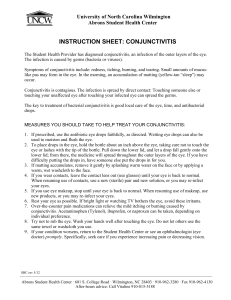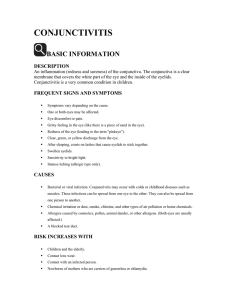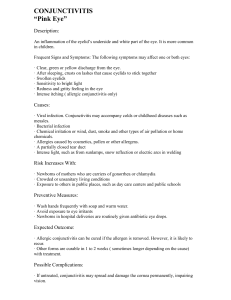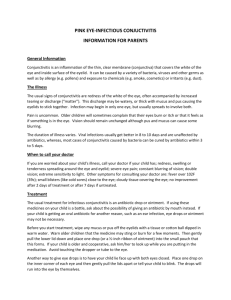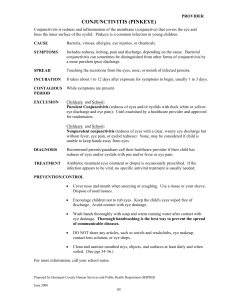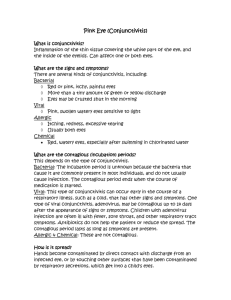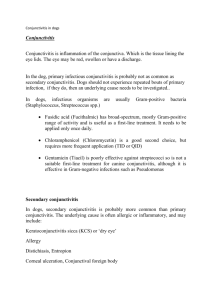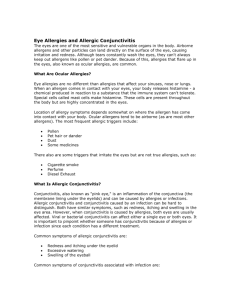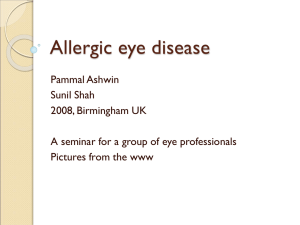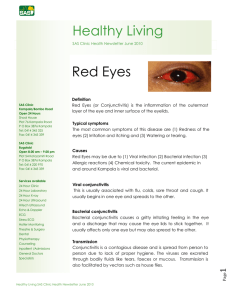acute bacterial conjunctivitis
advertisement
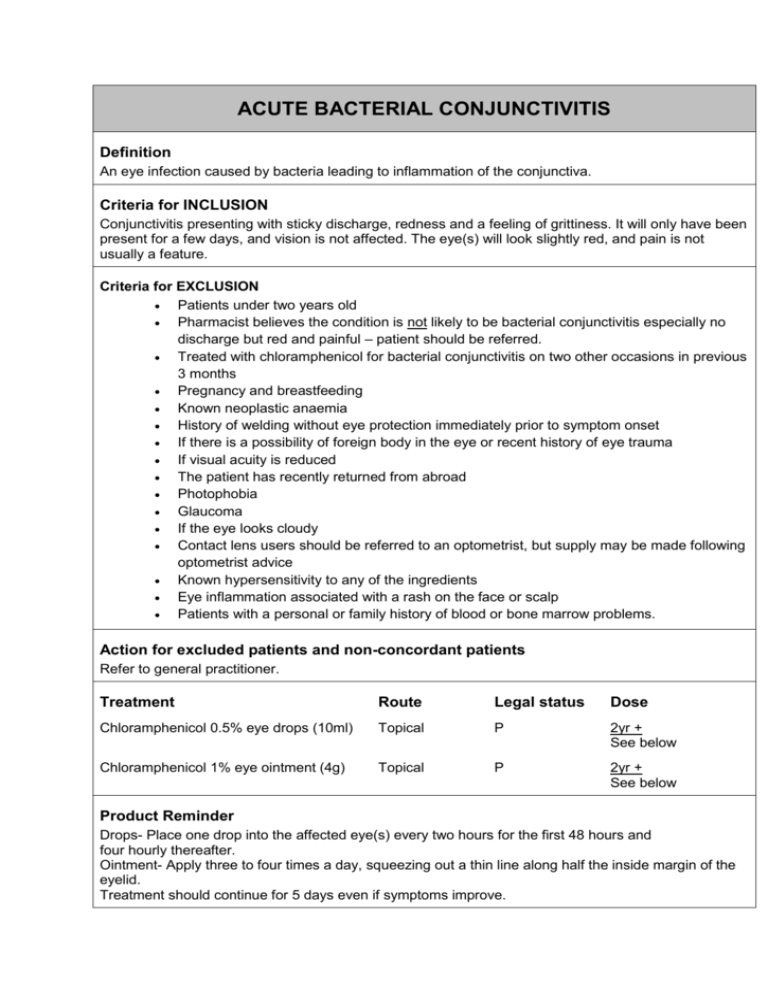
ACUTE BACTERIAL CONJUNCTIVITIS Definition An eye infection caused by bacteria leading to inflammation of the conjunctiva. Criteria for INCLUSION Conjunctivitis presenting with sticky discharge, redness and a feeling of grittiness. It will only have been present for a few days, and vision is not affected. The eye(s) will look slightly red, and pain is not usually a feature. Criteria for EXCLUSION Patients under two years old Pharmacist believes the condition is not likely to be bacterial conjunctivitis especially no discharge but red and painful – patient should be referred. Treated with chloramphenicol for bacterial conjunctivitis on two other occasions in previous 3 months Pregnancy and breastfeeding Known neoplastic anaemia History of welding without eye protection immediately prior to symptom onset If there is a possibility of foreign body in the eye or recent history of eye trauma If visual acuity is reduced The patient has recently returned from abroad Photophobia Glaucoma If the eye looks cloudy Contact lens users should be referred to an optometrist, but supply may be made following optometrist advice Known hypersensitivity to any of the ingredients Eye inflammation associated with a rash on the face or scalp Patients with a personal or family history of blood or bone marrow problems. Action for excluded patients and non-concordant patients Refer to general practitioner. Treatment Route Legal status Dose Chloramphenicol 0.5% eye drops (10ml) Topical P 2yr + See below Chloramphenicol 1% eye ointment (4g) Topical P 2yr + See below Product Reminder Drops- Place one drop into the affected eye(s) every two hours for the first 48 hours and four hourly thereafter. Ointment- Apply three to four times a day, squeezing out a thin line along half the inside margin of the eyelid. Treatment should continue for 5 days even if symptoms improve. ACUTE BACTERIAL CONJUNCTIVITIS Follow-up and advice Use during waking hours only. Storage between 2-8 degrees Celsius, therefore should be stored in the fridge. If there is no improvement after 48 hours or symptoms worsen, further medical advice should be sought. Continue treatment for 5 days, even if symptoms improve. The drops/ointment should not be used for longer than 5 days without consulting a doctor. The drops/ointment should not be shared. If pain or visual disturbance develops, further medical advice should be sought urgently. Infective conjunctivitis is contagious, so wash hands after touching the eyes and avoid sharing towel, facecloths etc. Once opened, the drops should be discarded after 5 days. Once opened the ointment should be discarded after 5 days. Possible side-effects Stinging and irritation may occur. Both the eye drops and ointment may cause transient blurring of vision, and patients should be advised not to drive or operate machinery unless their vision is clear. When to refer to GP Rapid referral Recent injury to the eye or surrounding area Possibility of a foreign body being present Moderate or severe pain in the eye Marked redness of the eye Swelling around the eye Eye surgery within the last six months Sensitivity to light Disturbed vision with or without nausea and vomiting The eye looks cloudy The pupil looks unusual Conditional referral Patients using other eye preparations Previous conjunctivitis in the recent past Glaucoma Dry eyes Contact lens wearers History of sensitivity to chloramphenicol or any other ingredients of the drops History of blood disorders Consider supply, but patient should be advised to make an appointment to see the GP: Recent travel abroad
